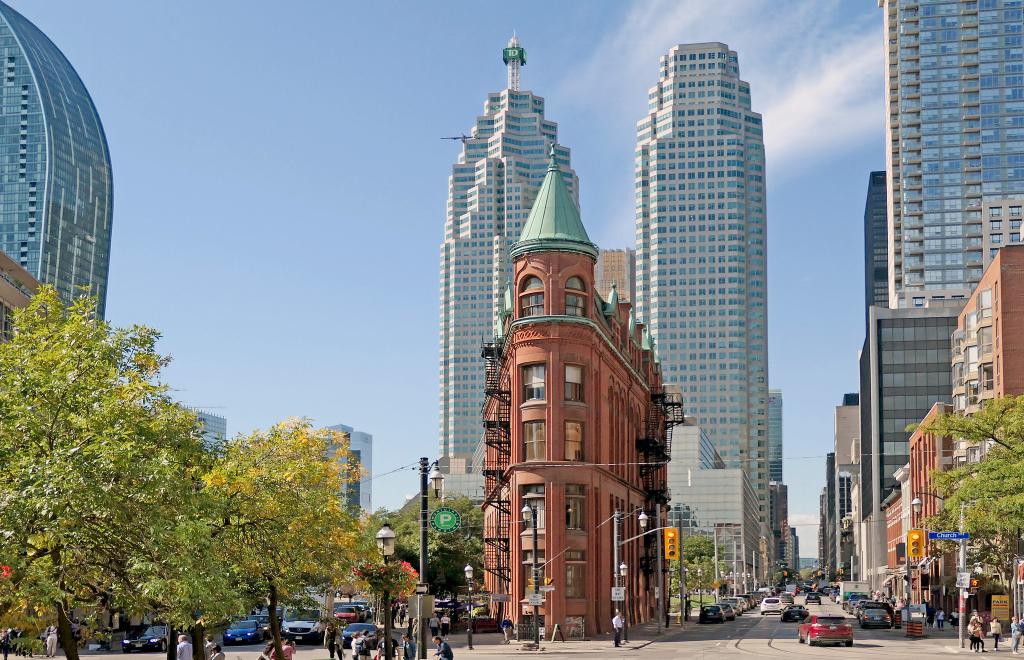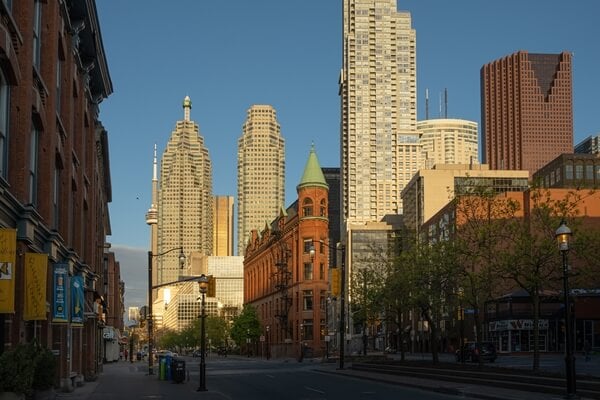Gooderham Building Entrance Fee: Details for Visitors About Costs.: How Weather and Nearby Attractions Can Enhance Your Trip.}
Gooderham Building Entrance Fee: Details for Visitors About Costs.: How Weather and Nearby Attractions Can Enhance Your Trip.}
Blog Article
Uncover the Rich History Behind the Gooderham Structure in Toronto
The Gooderham Structure, an exemplary manifestation of Richardsonian Romanesque design in Toronto, has a storied past that expands past its striking red brick frontage. Commissioned by the significant Gooderham and Worts distillery in 1891, this structure has actually played a critical function in forming the metropolitan landscape of the St. Lawrence Market area. As we discover its origins, architectural relevance, and cultural effect, one can not help yet question how this spots remains to influence Toronto's identity and heritage. What secrets exist within its walls that contribute to its enduring heritage?

Beginnings of the Gooderham Building
Creating an enduring legacy, the Gooderham Structure, likewise called the Flatiron Building, became a symbol of Toronto's architectural development in the late 19th century. The building's origins trace back to 1891 when it was commissioned by the Gooderham and Worts distillery, among copyright's largest distilling companies. Developed by designer David Roberts Jr. Gooderham Building address., the structure was distinctly positioned at the junction of Front and Wellington Streets, making the most of a triangular whole lot produced by the convergence of these thoroughfares
The building's building and construction used regional red block and terracotta, establishing a distinctive visual that matched the burgeoning cityscape. Initially intended to house the Gooderham and Worts workplaces, the structure represented the prosperity of the distillery, which had become a substantial factor to Toronto's economic climate. Especially, the conclusion of the Gooderham Structure accompanied a duration of rapid urbanization that characterized the era.
The facility of this building treasure not just showcased innovative style however also laid the groundwork for future developments in Toronto. Today, it stands as a testament to the city's abundant background and versatility, remaining to draw in visitors and admirers from around the world.
Architectural Importance
The building relevance of the Gooderham Building prolongs beyond its distinct flatiron shape, mirroring the ingenious spirit of late 19th-century style. Finished in 1892, the structure exemplifies the Richardsonian Romanesque design, defined by its robust masonry, rounded arcs, and detailed detailing. The bold use contrasting products, especially the cozy red block and sedimentary rock accents, boosts its visual charm and demonstrates the craftsmanship of the era.
The building's three-story layout is noteworthy for its unified proportions and elegant cornice, which contribute to its iconic silhouette against the Toronto horizon. The narrow great deal on which it stands positioned special challenges, yet the engineers, in this situation, created a structure that made best use of the readily available space while maintaining aesthetic balance.
Additionally, the Gooderham Structure is a testament to the versatility of building layout in urban atmospheres. Its enduring presence among contemporary advancements highlights the worth of preserving historic design as a way of honoring a city's past. Today, it remains a beloved site, mirroring both the architectural patterns of its time and the developing story of Toronto as a vibrant urban facility.
Function in Toronto's Advancement
Becoming a crucial player in Toronto's urban landscape, the Gooderham Building contributed substantially to the city's growth during the late 19th century. Created in 1892, this iconic edifice stood for not only the building ambitions of the time yet likewise the burgeoning financial landscape of Toronto. The building was initially made to work as a storage facility for the Gooderham and Worts distillery, which was among the largest distilleries in the British Realm. Its critical area at the junction of Front and Wellington Streets promoted the motion of goods and solutions, emphasizing the area's importance in the city's commercial a fantastic read tasks.
As the city increased, the Gooderham Structure came to be a crucial component of the St. Lawrence Market area, which was a center of profession and business. In essence, the Gooderham Structure is not simply a building spots; it played a critical function in forming Toronto's identity and financial growth throughout a transformative duration in its history.
Social Impact and Legacy
Gooderham Structure's distinct building style and historical value have actually left an indelible mark on Toronto's social landscape. As one of the city's most identifiable landmarks, its distinct flatiron form and intricate brickwork exhibit the Victorian architectural fads of the late 19th century. This framework not just acts as a visual support in the St. Lawrence neighborhood yet additionally personifies the spirit of an expanding city during an era of economic development.
The structure has actually become a symbol of Toronto's rich background, motivating local musicians and photographers that seek to catch its charm. Its presence has cultivated a sense of neighborhood identity, contributing to the narrative of city development. The Gooderham Building has actually played a pivotal function in the tourism industry, drawing in visitors anxious to discover its fabled past and building elegance.
Along with its visual charm, the building encapsulates a narrative of resilience and adaptation, as it has transitioned with numerous uses over the years - Gooderham Building address. Thus, the Gooderham Building stands not just as a monolith of architectural significance but additionally as a testament to the advancing cultural heritage of Toronto

Reconstruction and Conservation Efforts
Numerous restoration and preservation initiatives have actually been carried out to guarantee the Gooderham Building stays an important part of Toronto's architectural heritage. Initially completed in 1892, the building has actually undergone considerable remodellings to attend to architectural problems while retaining its historical stability. The most notable remediation happened in the late 20th century when the building was meticulously refurbished to fulfill modern-day safety requirements without endangering its initial design aspects.
These efforts consisted of repairing the distinct red-brick façade, restoring the renowned triangular form, and maintaining the elaborate stonework details. In addition, the building's inside has seen careful updates that value its historical significance, guaranteeing that original attributes such as wooden beams and decorative moldings are preserved.
The Gooderham Structure is currently secured as an assigned heritage property under the Ontario Heritage Act, which aids safeguard it from unacceptable modifications. Community involvement has played an essential duty in these preservation efforts, with regional advocacy teams raising understanding about the structure's historical significance. As a result, the Gooderham Building stands not only as a functional space however additionally as a testament to Toronto's rich building background and sustaining cultural heritage.
Verdict

Please visit one of our local supporters - Gamerama And The Repair Store - Iphone Repair
Report this page